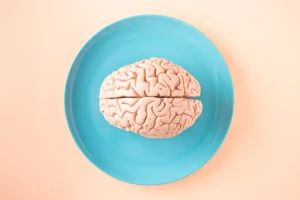
Home hemodialysis (HHD) and peritoneal dialysis (PD) are both performed at home by the patient, often with the aid of a trained care partner or family member. Both treatments can offer individuals more flexibility and more independence than traditional in-center hemodialysis while also helping ensure they have access to the care they need. While some may wonder if one home treatment is better than the other, the decision of which home dialysis treatment is prescribed comes down to the nephrologist and the patient as they identify the right treatment for them based on their lifestyle and clinical needs at the time.
“PD and HHD have differences when it comes to how they’re performed and the impact they have on scheduling,” Dr. Mihran Naljayan, DaVita’s chief medical officer of Home modalities, explains. “Treatment decisions should be individualized to patients’ needs. Regardless of the home dialysis treatment an individual chooses, they still regularly meet with their care team to make sure they are staying on track with treatments and are successfully managing their kidney health needs.”
Home Hemodialysis
With HHD, patients safely receive essentially the same treatment that they would if they were in a dialysis center — except at home and most often with a trained care partner/family member.** During HHD, blood flows from the patient’s vascular access through a dialysis machine. The dialysis machine cleanses the blood of extra waste/toxins and fluids and sends the clean blood back into the body, mimicking native kidney function. Treatment at home is typically shorter than a traditional in-center treatment but may be performed more than three times each week as determined by the patient’s nephrologist.*** Patients do not have as much down time in between treatments thus reducing the recovery time.
HHD is also noted as putting less stress on the patient’s heart and supporting better blood pressure control than in-center hemodialysis due to increased frequency1. Day to day, people who treat with HHD might have more freedom in their schedule, fewer dietary restrictions,2 improved sleep3 and more energy4.
Peritoneal Dialysis
Unlike HHD, PD is a needle-free treatment option. Prior to starting PD, patients undergo a surgery to have a catheter placed typically in the abdomen. Once this access is placed and ready for use, the patient then uses it to pass a dialysate solution into the abdomen, where it will pull waste from the blood and is then drained out. PD is not only the most common home dialysis treatment option, it may also be a gentler treatment as it more closely mimics the natural kidney function. PD can be performed with the use of manual PD fluid bags or a cycler. The patients work closely with their nephrologist to determine the best approach for PD at home.
CCPD
Most people on PD choose Continuous Cycling Peritoneal Dialysis (CCPD) because they can do a majority of their treatments while they’re sleeping — even further reducing the impact that dialysis treatments can have on their lifestyle. That’s because CCPD uses a cycler machine to automate the process of passing dialysate in and out of the body, typically over an eight to 10-hour timeframe. By doing this at night during sleep, people on CCPD can most often go about their daily routines without disruption for treatment.
CAPD
Continuous ambulatory peritoneal dialysis (CAPD) can also provide flexibility of location — as long as it’s done in a clean environment. Instead of using a cycler machine, CAPD relies on gravity with the use of a manual PD fluid bag, similar to an IV bag, to perform exchanges. Each exchange passes dialysate from the PD fluid bag into the abdominal cavity (peritoneal cavity) and out of the body. While patients who choose CAPD need to perform the process three to four times per day, it takes only about 30 minutes to complete each exchange.
Similar to HHD, PD offers people who need dialysis greater flexibility, shorter recovery times5 and, potentially, fewer dietary restrictions2. PD can also help better preserve remaining kidney function6 and lead to more favorable transplant outcomes7.
How do people decide between HHD and PD?
Treatment decisions are always made between the patient and their nephrologist. Nephrologists may need to take into consideration factors such as comorbid conditions and lifestyle to determine if one treatment may be clinically appropriate for the patient versus another. Lifestyle considerations can include questions such as: Are you currently a student? Do you enjoy traveling? And even still, they may consider if the patient would benefit from more dedicated and constant support from professionally-trained staff in a medical setting or if they, with training and support, can manage the process themselves.
“The key steps leading to a modality decision for a patient are understanding what the most important and necessary clinical and lifestyle needs are for a patient and, thus, educating them about the pros and cons of each therapy type to address those concerns and needs,” Dr. Naljayan says. “This way patients can make an educated decision…along with their nephrologist and choose the right modality for them at a specific point in time.”
Dr. Naljayan also points out that individual kidney health journeys may involve the need and opportunity to change from different treatment options, alternating across home treatment options, in-center treatment and transplant:****
“This is why DaVita offers care in all the various kidney journey steps to help patients navigate these transition points safely.”
Source: https://newsroom.davita.com/




